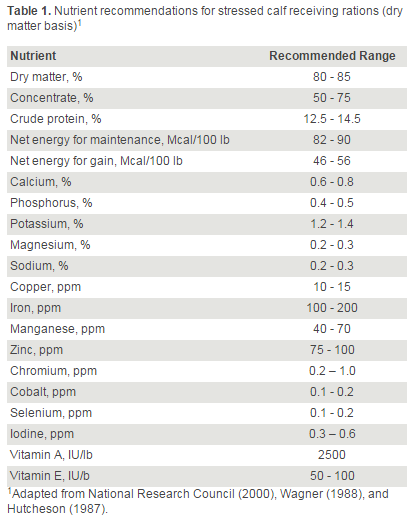Recommendations for Receiving Cattle: Health and Nutrition

Taking the proper steps to get calves off to the right start is paramount to the success of a cattle feeding operation.
By: Reid McDaniel, SDSU Extension Beef Feedlot Specialist
One of the most important decisions feedlots face is how to properly receive new cattle. Minimizing the stress of weaning, marketing, and shipping can have a large impact on the bottom line. Giving new cattle everything they need to remain healthy during the feeding period is the right thing to do from an animal well-being point-of-view. Given the current record costs of feeder cattle, it is also a decision with economic incentives. This article will briefly discuss several important topics related to getting calves off to the right start.
Prior to Processing
An effective receiving program minimizes incidence of disease and gets cattle on feed. The impact of nutrition on immunity is greatest during the first few days after arrival. The efficacy of a vaccination program is dependent upon the ability of a calf’s immune system to respond accordingly. Feed and water intake rehydrates cattle, improves immune function, and promotes healthy rumen activity. Cattle are likely to be tired, thirsty, and hungry off the truck. For these reasons, calves should be rested for at least 24 hours in dry pens (bedded if necessary) before initial processing with free-choice access to high-quality grass hay and fresh water.
Processing/Vaccination Programs
Calves that have been properly pre-conditioned with vaccination against viral respiratory pathogens (i.e., IBR, BRSV, and BVDV) exhibit in general better health than non-pre-conditioned calves, regardless of the arrival vaccination program. However, in many cases, this is out of the control of the feedlot operator. The main questions then becomes, what vaccines should be used to help boost the immune response, and when should those be administered?
Most studies show positive results from using viral vaccines in the arrival program. These vaccines include IBRV, BVDV, BRSV, and PI 3, and are available as modified-live or killed versions. Evidence for including bacterial pathogens such as Mannheimia, Histophilus, or Mycoplasma in vaccine programs is not as solid. While bacterial pathogens are the most important causes of bovine respiratory disease, they typically occur following an infection with a virus. Therefore, most current recommendations for vaccination upon arrival include viral vaccines (typically modified-live or intranasal) but not bacterial vaccines.
When considering timing, feedlot operators should remember that calves undergoing stress do not respond well to vaccines. Letting newly-received cattle rest overnight, or at least one hour for every hour transported, will allow stress levels to decrease before processing. Research suggests that delaying vaccination for even as long as 14 days following arrival resulted in better immune stimulation and lower levels of illness in groups of stressed calves (Richeson and co-authors; 2008). When cattle are well fed, they are better able to respond appropriately to vaccination.
Receiving Calf Nutrition
Providing the required nutrients helps reduce stress-related weight loss, immune system suppression, pulls, and death loss. Getting newly-received calves to eat is a common challenge faced by feedlots. Depending on the previous history, some calves will eat and drink quicker than others. This is particularly true of preconditioned or creep-fed cattle. A common method that attracts cattle to the bunk and encourages feed intake includes delivery of the receiving ration after good-quality grass hay has been distributed evenly in the bunk. Following this protocol for a few days after receiving gives cattle access to hay and introduces them to the new ration. Depending on the cattle, the time required to establish intake of the receiving ration may vary. As ration intake increases, the hay can be decreased until only the ration is being fed.
The basic components of a well-managed receiving nutrition program are outlined below:
- Access to good-quality grass hay that is free of dust, mold, and weeds
- Unlimited access to fresh water
- Palatable ration ingredients
- Adequate mixing to reduce sorting
- Proper intake management (bunk calling)
Because intake is usually low, it is imperative that each bite of feed contains the adequate nutrients which meet the requirements of the cattle. Table 1 outlines nutrient recommendations for stressed calves.








